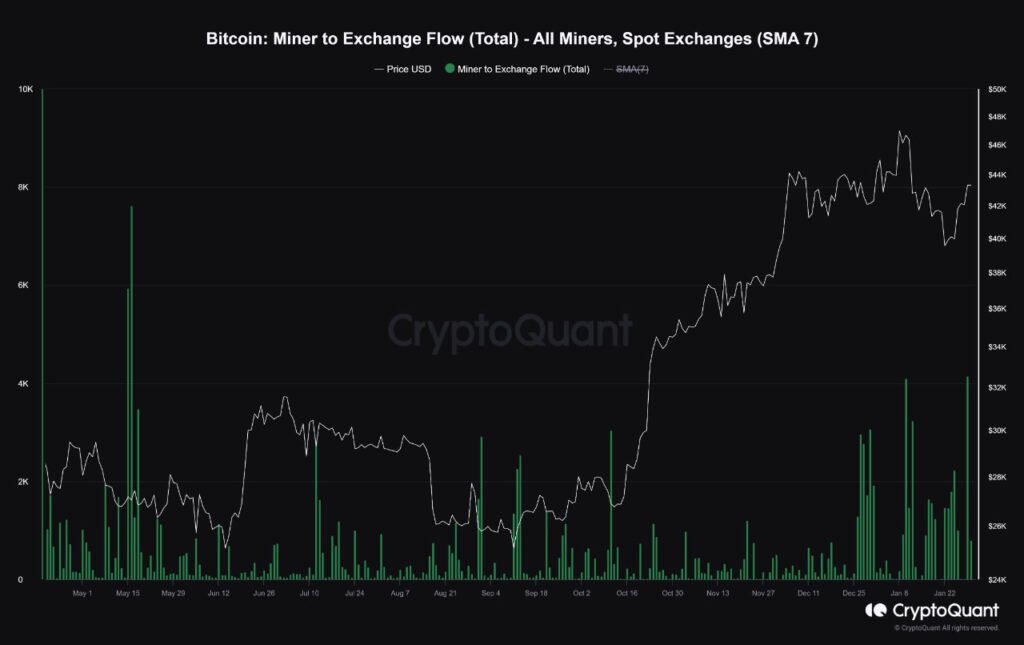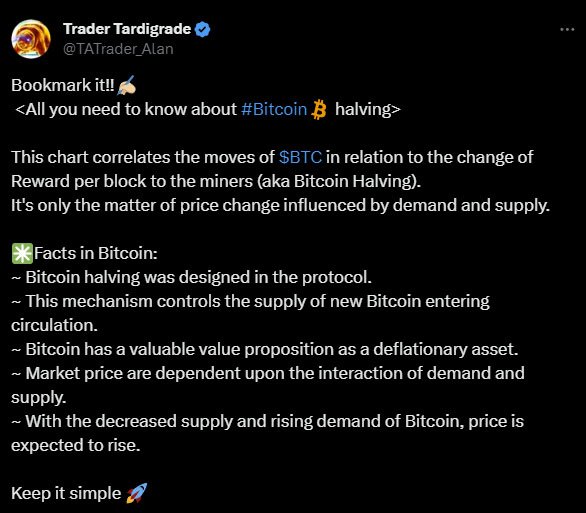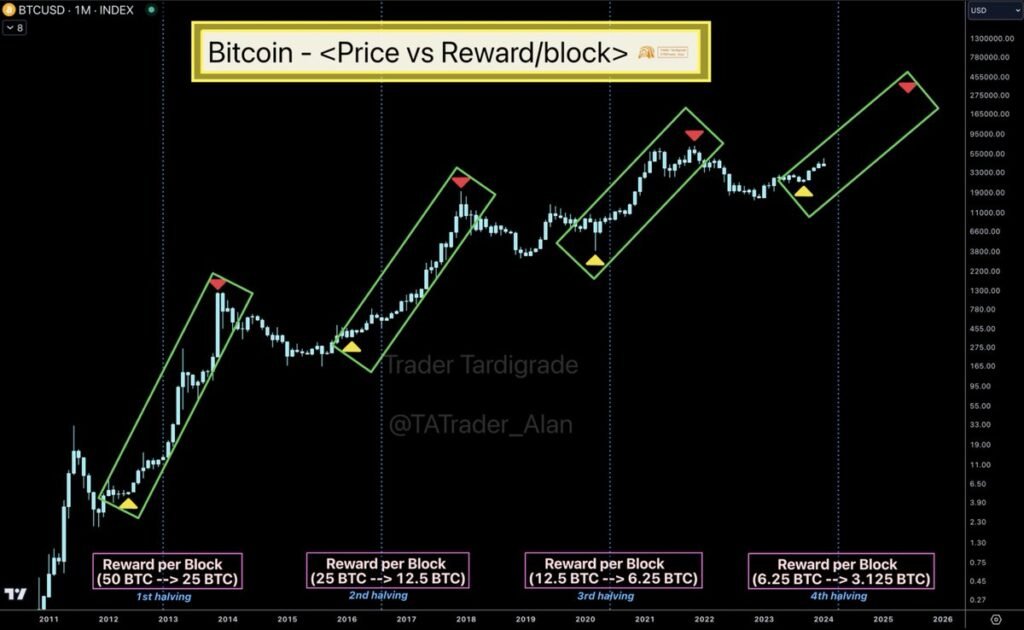The digital asset market recently witnessed a notable surge in the flow of bitcoin from bitcoin miner wallets to spot exchange platforms, marking the highest volume since May 16, 2023.
This event was flagged by CryptoQuant’s analysis, which reported the move of over 4,000 BTC worth around $173 million, flowing from miner wallets to exchanges on January 29.

Despite the massive selling pressure from miners, the market has exhibited resilience, with bitcoin trading above $42.5k and maintaining a steady 7% weekly surge.
Bitcoin Miners’ Wallet Outflows: Detailed Analysis
CryptoQuant’s on-chain intelligence platform has highlighted the stability of mining portfolio reserves since the beginning of January. While interactions with exchanges did occur, including notable ones, they did not align with a wholesale “dump” from miners. CryptoQuant states:
“It is also necessary to take into account that reserves in mining portfolios have remained at the same level since the beginning of January.”
This nuanced market dynamic amid heightened activity suggests a more complex scenario than a straightforward sell-off. The report emphasized the importance of caution when interpreting narratives such as “miners are offloading coins.”
It suggested that such analyses might overlook the possibility of these BTC circulating back to miners’ wallets, indicating that the situation might be more intricate than a one-sided market move.
Negative Trends in Exchange Netflows
Notably, bitcoin exchange netflows have predominantly shown negative trends, remaining in the red zone over the past week.
However, this could be viewed positively, as a transition from centralized exchanges to self-custodial methods diminishes immediate selling pressure and is perceived as a bullish indicator for the market.
A Strategic Move
Miners strategically liquidating their reserves is a calculated maneuver. Generally, miners opt to secure profits in anticipation of a halving event, a practice aimed at covering operational expenses and positioning themselves for future investments.
This strategy gains significance, particularly as the competition within the Bitcoin mining realm intensifies with each halving cycle. The diminishing block rewards, a direct result of halving, effectively reduce miners’ income unless there is a proportional increase in the price of Bitcoin.


Bitcoin Halving’s Impact on Miners: Positive or Negative?
Notably, on January 25, in a comprehensive analysis, financial services company Cantor Fitzgerald predicted that the forthcoming Bitcoin halving in April could potentially render nine out of the 11 largest publicly traded Bitcoin miners unprofitable.
This sheds light on the vulnerability of major players in the mining industry and underscores the potential impact of the halving event on their profit margins.
On the other hand, QCP Capital’s recent analysis aligned with bitcoin bulls in the long term. It highlights the slow yet positive trends in the recently approved bitcoin spot Exchange-Traded Funds (ETFs), stating:
“Other than GBTC, the other ETFs continue to see decent inflows. Funding has also been fairly neutral, which reflects a moderation of speculative positioning.”










